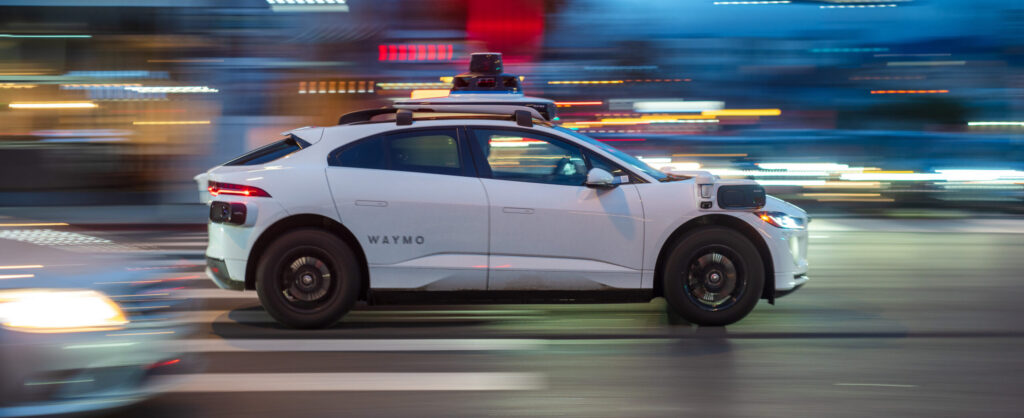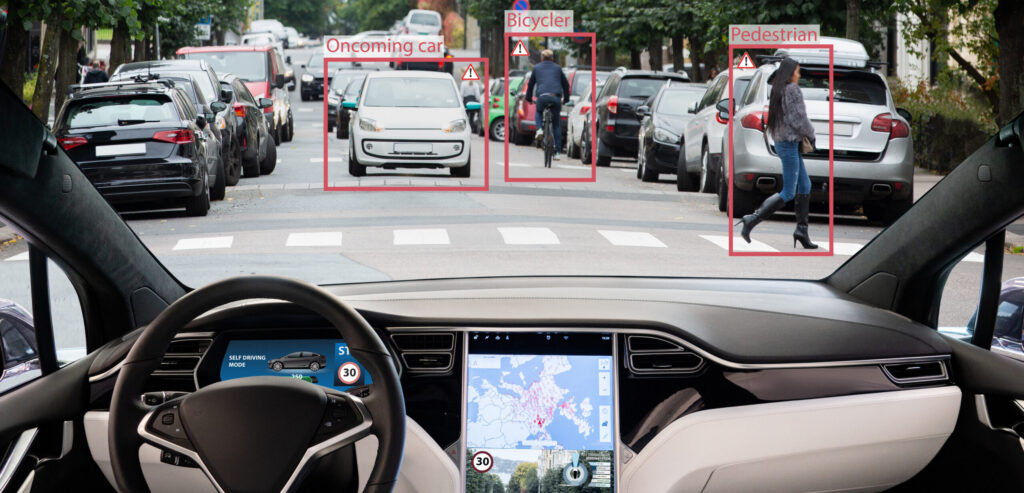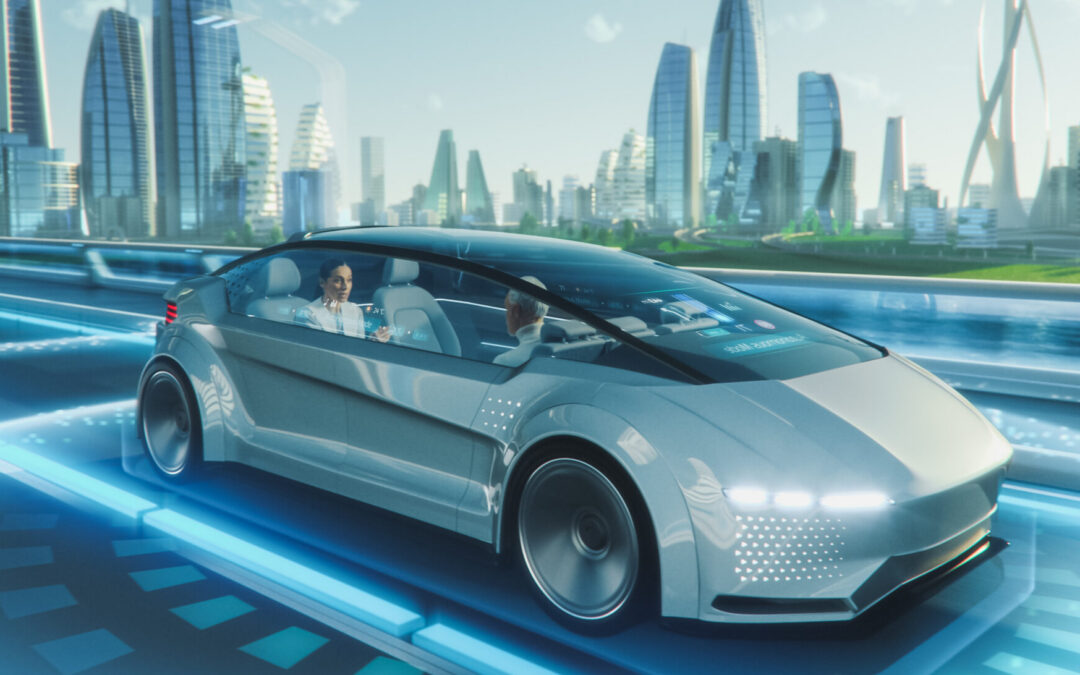A month ago, a robot taxi killed San Francisco’s most beloved bodega cat. The city erupted in grief and rage, with memorials, protests, and calls to ban autonomous vehicles altogether. Last week, Amazon launched its own fleet of self-driving taxis on those same streets anyway.
Welcome to the future of transportation, where steering wheels are optional but controversy is guaranteed.
The New Players Rolling In
Amazon’s robotaxi company Zoox began offering rides to San Francisco residents on November 18, joining Google’s Waymo in what’s rapidly becoming a battle for autonomous vehicle dominance across American cities. These aren’t cars with nervous human backup drivers anymore. They’re purpose-built, steering wheel-free vehicles that look like rolling toasters and navigate city streets entirely on their own.
Zoox’s entry into San Francisco marks a significant expansion of the self-driving taxi phenomenon. The company’s distinctive box-shaped vehicles, which can drive in either direction and seat passengers facing each other, started rolling through SoMa, the Mission, and the Design District. For now, rides are free through an “Explorer” program, but the company plans to open to paying customers in 2026.
Waymo, meanwhile, isn’t standing still. The Alphabet-owned company now operates in Phoenix, San Francisco, Los Angeles, Austin, and Atlanta, with Miami and Washington D.C. launches planned. It’s providing over 200,000 paid rides per week and recently began testing highway driving. The company is also expanding internationally, beginning tests in Tokyo. Think of it as Uber, but the driver is a very sophisticated computer that never asks you to rate your trip.
The Incident That Changed Everything

On the night of October 27, a beloved bodega cat known as the “Mayor of 16th Street” was struck and killed by a Waymo robotaxi outside Randa’s Market in San Francisco’s Mission District. KitKat, a nine-year-old tabby, had been a neighborhood fixture for years, greeting customers and serving as an unofficial mascot.
Witnesses reported seeing KitKat under the vehicle and attempting to stop it before it pulled away. A memorial shrine grew on the sidewalk, adorned with flowers, candles, and notably angrier messages. One sign read “Kill a Waymo! Save a Cat!” Another passerby was heard yelling “Kitty cats, not killer cars.”
Waymo said the cat “darted under our vehicle as it was pulling away” and offered condolences along with a donation to an animal rights organization. But the damage to public perception was done. When there’s no human driver to hold accountable, to apologize, to show remorse in the moment; grief transforms into something else entirely.
The Uncomfortable Math of Acceptable Deaths
Here’s where things get darker. Just hours before KitKat was killed, Waymo co-CEO Tekedra Mawakana sat on stage at TechCrunch Disrupt and addressed a hypothetical that suddenly became very real. When asked if society would accept a death caused by a robotaxi, she didn’t hesitate.
“I think that society will,” Mawakana said slowly. She explained that while self-driving cars could dramatically reduce overall traffic fatalities, they won’t achieve 100% perfection. At Waymo headquarters, executives don’t ask “if” a fatal crash will happen. They ask “when.”
The logic is clinical and arguably sound: if autonomous vehicles cause fewer deaths than human drivers overall, then statistically, more people live. It’s the trolley problem made real, except the trolley is a box-shaped vehicle worth hundreds of thousands of dollars and programmed by engineers in Silicon Valley. Mawakana emphasized transparency, pointing to Waymo’s public safety data hub and urging competitors to do the same.
The Backlash Has Teeth

San Francisco Supervisor Jackie Fielder seized on the incident to introduce a resolution calling for local voters to have the power to ban autonomous vehicles in their neighborhoods. “A human driver can be held accountable, can hop out, say sorry, can be tracked down by police if it’s a hit-and-run,” Fielder told reporters. “Here, there is no one to hold accountable.”
It’s not just about one cat. Critics point to traffic congestion caused by confused robotaxis, concerns about data collection, and the impact on professional drivers’ livelihoods. Former Zoox engineer Bob Somers, now an anti-driverless car activist, argues that even with multiple sensors and cameras, these vehicles have failure modes that can lead to disaster. He references a 2023 incident where a Cruise robotaxi dragged a pedestrian 20 feet after she was thrown into its path.
The industry maintains that autonomous vehicles are statistically safer than human drivers; Waymo claims 80% fewer injury-causing crashes compared to human drivers over the same distance. But statistics feel different when your neighborhood’s beloved cat becomes one of them.
Progress Doesn’t Wait for Permission
The robotaxi market is projected to explode from $2 billion in 2024 to over $188 billion by 2034. Uber is partnering with Lucid to deploy 20,000 self-driving vehicles. Chinese companies are expanding globally. Amazon has facilities capable of producing tens of thousands of robotaxis and plans to scale production by 2026, with Las Vegas as its first commercial market.
The message is clear: public acceptance will follow deployment, not precede it. When algorithms make life-and-death decisions on our streets with no human face to the mistake, when a beloved neighborhood fixture becomes collateral damage; these aren’t bugs to be fixed in the next software update. Cities are becoming testing grounds whether residents signed up for it or not.
The KitKat memorial represents anxiety about a future arriving faster than our ability to process it. The robot taxis are already here, navigating your streets while you sleep. The question isn’t whether they’ll become commonplace, but whether we’ll have any say in how they operate. And whether the companies programming them will value a neighborhood cat as much as market expansion.

